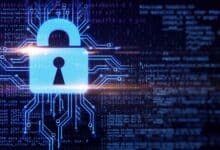The Internet of Things (IOT)

The Internet of Things (IoT) refers to the network of physical devices, vehicles, buildings, and other objects that are embedded with sensors, software, and connectivity, enabling them to collect and exchange data. The IoT allows for the seamless integration of physical objects into the digital world, creating new opportunities for automation, efficiency, and data-driven insights.
The devices connected to the IoT can range from simple sensors to complex machines, and they can be found in a wide variety of settings, including homes, factories, hospitals, and cities. Some examples of IoT devices include smart thermostats, fitness trackers, industrial sensors, and connected cars.
The data collected by IoT devices can be used to improve processes, optimize performance, and enhance user experiences. For example, smart thermostats can automatically adjust the temperature based on user preferences and occupancy patterns, while industrial sensors can provide real-time data on machine performance to prevent breakdowns and optimize maintenance schedules.
However, the widespread adoption of IoT devices also presents new security and privacy risks. The sheer volume of devices and the vast amount of data they generate make it difficult to secure the IoT ecosystem, and many devices lack basic security features such as encryption and authentication. As a result, the IoT is vulnerable to cyber attacks, data breaches, and privacy violations.

To address these risks, it is important to develop robust security and privacy frameworks for IoT devices, including strong authentication and encryption protocols, secure firmware updates, and data privacy controls. It is also important to ensure that IoT devices are designed with security in mind from the outset, rather than as an afterthought.
The Internet of Things (IoT) offers several potential benefits for the industry, including:
Improved efficiency: IoT devices can automate processes, collect data in real-time, and provide insights into performance and productivity, which can help organizations optimize their operations and reduce costs.
Predictive maintenance: IoT devices can monitor machines and equipment and detect potential issues before they occur, allowing for proactive maintenance and minimizing downtime.
Enhanced safety: IoT devices can be used to monitor hazardous conditions and provide real-time alerts to prevent accidents and injuries.
Increased productivity: IoT devices can automate routine tasks, such as inventory management and quality control, allowing employees to focus on more strategic activities.
Data-driven decision-making: IoT devices can generate vast amounts of data, which can be used to inform decision-making and drive innovation.
Improved customer experiences: IoT devices can provide real-time data on customer behavior and preferences, allowing organizations to personalize their offerings and provide a better customer experience.
Overall, the IoT offers significant potential for the industry to improve efficiency, reduce costs, enhance safety, and drive innovation. However, it is important to ensure that IoT devices are designed and deployed securely, to prevent cyber attacks and protect sensitive data.
There are many use cases for the Internet of Things (IoT) across a wide range of industries. Here are some examples:
Smart homes: IoT devices can be used to control home appliances, lighting, security systems, and HVAC systems, providing greater convenience and energy efficiency.
Industrial automation: IoT devices can automate and optimize manufacturing processes, monitor equipment performance, and reduce downtime.
Connected vehicles: IoT devices can provide real-time data on vehicle performance and driver behavior, enabling predictive maintenance, safer driving, and more efficient routes.
Smart cities: IoT devices can be used to monitor traffic patterns, air quality, and energy usage, enabling cities to optimize services and improve the quality of life for residents.
Healthcare: IoT devices can be used to monitor patients remotely, track medication adherence, and improve the efficiency of medical devices and equipment.
Agriculture: IoT devices can be used to monitor soil moisture levels, crop growth, and weather conditions, enabling farmers to optimize irrigation and fertilizer use and increase yields.
Logistics and supply chain: IoT devices can be used to track the location and condition of goods in transit, reducing the risk of theft or damage and improving delivery times.
Energy management: IoT devices can be used to monitor energy usage in buildings and optimize HVAC and lighting systems, reducing energy costs and carbon emissions.
These are just a few examples of the many potential use cases for IoT devices. As the technology continues to evolve, it is likely that we will see even more innovative applications in the future.




Nice written article. Very informative.